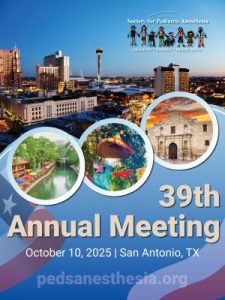{“questions”:{“7yupc”:{“id”:”7yupc”,”mediaType”:”image”,”answerType”:”text”,”imageCredit”:””,”image”:””,”imageId”:””,”video”:””,”imagePlaceholder”:””,”imagePlaceholderId”:””,”title”:”A 14-year-old male with well-controlled type 1 diabetes and idiopathic scoliosis presents for posterior spine fusion. The surgery is expected to take four hours with an anticipated blood loss of 600mL. He uses an insulin pump for insulin administration. The insulin pump insertion site is located on the patient\u2019s lateral abdomen and will not interfere with the operative field or prone positioning. Which intraoperative insulin management plan is MOST appropriate for this patient?”,”desc”:””,”hint”:””,”answers”:{“1db5r”:{“id”:”1db5r”,”image”:””,”imageId”:””,”title”:”A.\tDiscontinue the insulin pump and start a continuous infusion of intravenous insulin.”,”isCorrect”:”1″},”4hhqm”:{“id”:”4hhqm”,”image”:””,”imageId”:””,”title”:”B.\tContinue the insulin pump infusion at its current rate.”},”evkac”:{“id”:”evkac”,”image”:””,”imageId”:””,”title”:”C.\tDiscontinue the insulin pump and administer a dose of long-acting subcutaneous insulin.”},”swk46″:{“id”:”swk46″,”image”:””,”imageId”:””,”title”:”D.\tContinue the insulin pump infusion and decrease the rate by half.”}}}},”results”:{“bggx7”:{“id”:”bggx7″,”title”:””,”image”:””,”imageId”:””,”min”:”0″,”max”:”1″,”desc”:””,”redirect_url”:”https:\/\/pedsanesthesia.org\/wp-content\/uploads\/2022\/11\/Week-117-Periop-Insulin-Administration-2.pdf”}}}
Question of the Week #116
{“questions”:{“naota”:{“id”:”naota”,”mediaType”:”image”,”answerType”:”text”,”imageCredit”:””,”image”:””,”imageId”:””,”video”:””,”imagePlaceholder”:””,”imagePlaceholderId”:””,”title”:”A 5-year-old boy presents for tonsillectomy and adenoidectomy. Preoperative screening revealed a family history of von Willebrand Disease (vWD) and a mildly prolonged aPTT. The patient undergoes a hematology evaluation and is diagnosed with type 1 vWD. What is the MOST APPROPRIATE treatment for preventing and treating intraoperative bleeding events?”,”desc”:””,”hint”:””,”answers”:{“bikj5”:{“id”:”bikj5″,”image”:””,”imageId”:””,”title”:”A.\tvon Willebrand factor concentrate”},”fmyb7″:{“id”:”fmyb7″,”image”:””,”imageId”:””,”title”:”B.\tDesmopressin”,”isCorrect”:”1″},”nuhyd”:{“id”:”nuhyd”,”image”:””,”imageId”:””,”title”:”C.\tCryoprecipitate”},”zro3o”:{“id”:”zro3o”,”image”:””,”imageId”:””,”title”:”D.\tPlatelet transfusion”}}}},”results”:{“5e8on”:{“id”:”5e8on”,”title”:””,”image”:””,”imageId”:””,”min”:”0″,”max”:”1″,”desc”:””,”redirect_url”:”https:\/\/pedsanesthesia.org\/wp-content\/uploads\/2022\/11\/Week-116-von-Willebrand-Disease.pdf”}}}
Question of the Week #115
{“questions”:{“4fish”:{“id”:”4fish”,”mediaType”:”image”,”answerType”:”text”,”imageCredit”:””,”image”:””,”imageId”:””,”video”:””,”imagePlaceholder”:””,”imagePlaceholderId”:””,”title”:”A 3-year-old female has a serum sodium of 128 mmol\/L two days after resection of a large brain tumor. Which of the following would be the MOST useful in distinguishing cerebral salt wasting syndrome from syndrome of inappropriate antidiuretic hormone?”,”desc”:””,”hint”:””,”answers”:{“0af9g”:{“id”:”0af9g”,”image”:””,”imageId”:””,”title”:”A.\tSerum sodium”},”q483i”:{“id”:”q483i”,”image”:””,”imageId”:””,”title”:”B.\tSerum osmolality”},”wnwdc”:{“id”:”wnwdc”,”image”:””,”imageId”:””,”title”:”C.\tClinical volume status”,”isCorrect”:”1″},”sn94c”:{“id”:”sn94c”,”image”:””,”imageId”:””,”title”:”D.\tUrine sodium”}}}},”results”:{“vvy6p”:{“id”:”vvy6p”,”title”:””,”image”:””,”imageId”:””,”min”:”0″,”max”:”1″,”desc”:””,”redirect_url”:”https:\/\/pedsanesthesia.org\/wp-content\/uploads\/2022\/10\/Week-115-Cerebral-Salt-Wasting-Syndrome.pdf”}}}
Question of the Week #114
{“questions”:{“zjyz5”:{“id”:”zjyz5″,”mediaType”:”image”,”answerType”:”text”,”imageCredit”:””,”image”:””,”imageId”:””,”video”:””,”imagePlaceholder”:””,”imagePlaceholderId”:””,”title”:”A 6-month-old infant is sedated for a brain MRI. After the scan is completed, burn injuries are noted on the patient\u2019s left hand. Which of the following safety precautions would be MOST effective at preventing this complication?”,”desc”:””,”hint”:””,”answers”:{“9gmfc”:{“id”:”9gmfc”,”image”:””,”imageId”:””,”title”:”A.\tScreening the patient for metal implants in zone IV”},”9op0n”:{“id”:”9op0n”,”image”:””,”imageId”:””,”title”:”B.\tUsing an MRI-safe pulse oximeter”,”isCorrect”:”1″},”93iuq”:{“id”:”93iuq”,”image”:””,”imageId”:””,”title”:”C.\tCurling the monitor cable on top of the patient\u2019s hand”},”5l29v”:{“id”:”5l29v”,”image”:””,”imageId”:””,”title”:”D.\tCooling the patient during the MRI scan”}}}},”results”:{“bimxh”:{“id”:”bimxh”,”title”:””,”image”:””,”imageId”:””,”min”:”0″,”max”:”1″,”desc”:””,”redirect_url”:”https:\/\/pedsanesthesia.org\/wp-content\/uploads\/2022\/10\/Week-114-MRI-Safety.pdf”}}}
Question of the Week #113
{“questions”:{“q6zyf”:{“id”:”q6zyf”,”mediaType”:”image”,”answerType”:”text”,”imageCredit”:””,”image”:””,”imageId”:””,”video”:””,”imagePlaceholder”:””,”imagePlaceholderId”:””,”title”:”Which of the following patients is at high risk for developing postoperative nausea and vomiting?”,”desc”:””,”hint”:””,”answers”:{“dy28b”:{“id”:”dy28b”,”image”:””,”imageId”:””,”title”:”A.\t2-year-old male undergoing circumcision with sevoflurane”},”f0yqq”:{“id”:”f0yqq”,”image”:””,”imageId”:””,”title”:”B.\t7-year-old male undergoing ORIF of distal radius fracture with sevoflurane and propofol”},”8gdz1″:{“id”:”8gdz1″,”image”:””,”imageId”:””,”title”:”C.\t14-year-old female with a history of motion sickness undergoing strabismus repair with sevoflurane and nitrous oxide”,”isCorrect”:”1″},”kdbl7″:{“id”:”kdbl7″,”image”:””,”imageId”:””,”title”:”D.\t5-year-old female undergoing cystoscopy with propofol and dexmedetomidine”}}}},”results”:{“c7s5o”:{“id”:”c7s5o”,”title”:””,”image”:””,”imageId”:””,”min”:”0″,”max”:”1″,”desc”:””,”redirect_url”:”https:\/\/pedsanesthesia.org\/wp-content\/uploads\/2022\/10\/Week-113-Postoperative-Nausea-and-Vomiting.pdf”}}}
- « Previous Page
- 1
- …
- 29
- 30
- 31
- 32
- 33
- …
- 46
- Next Page »
